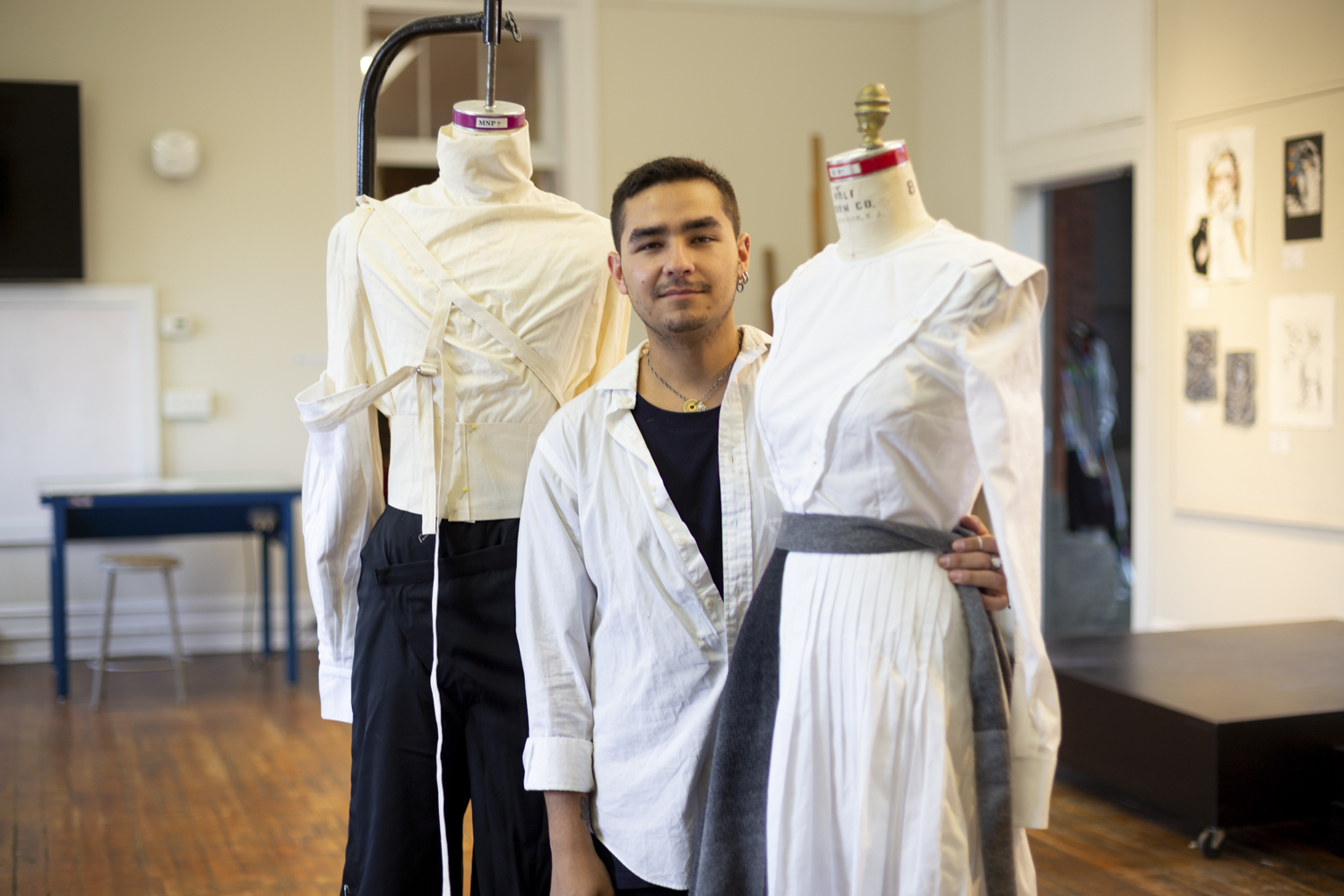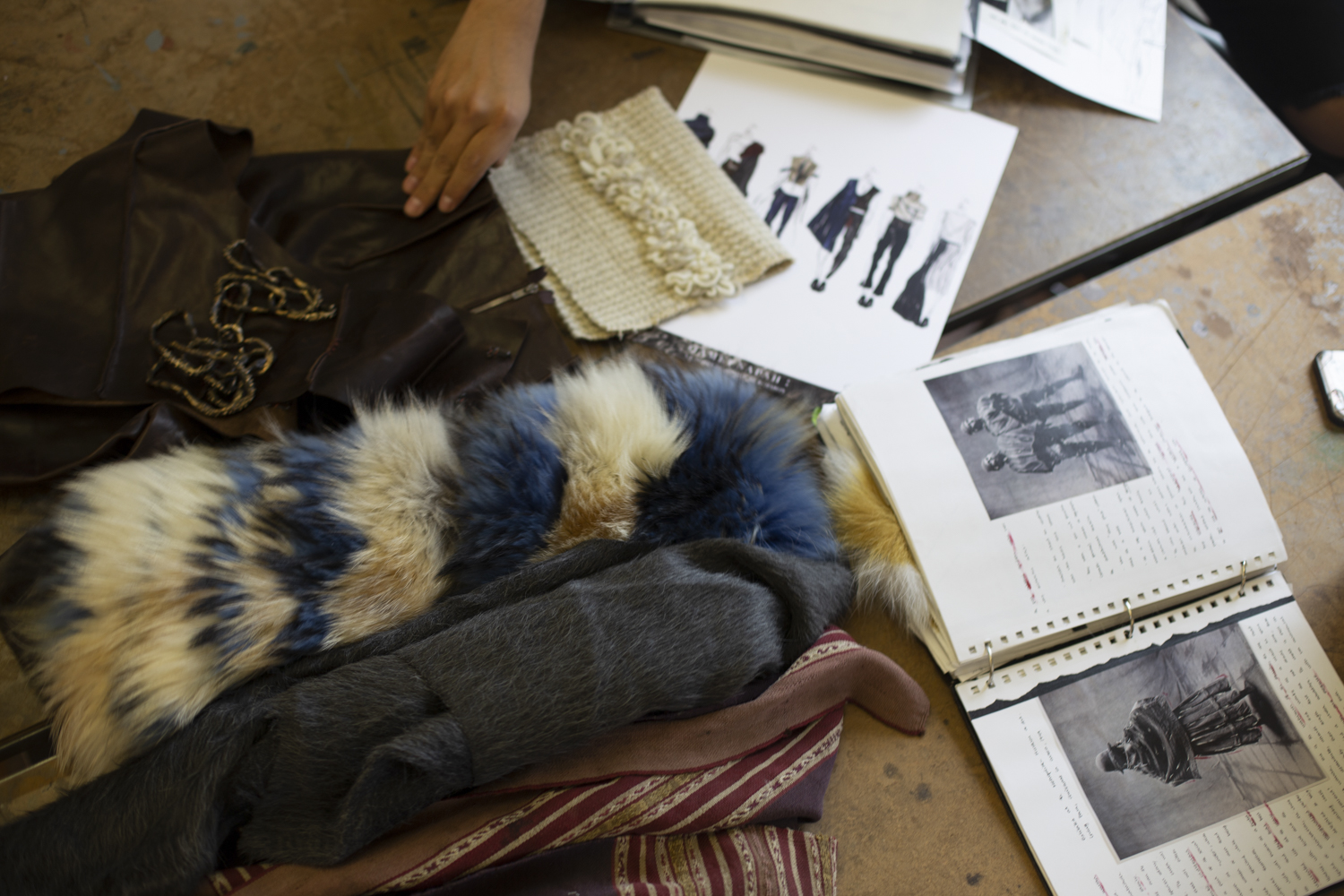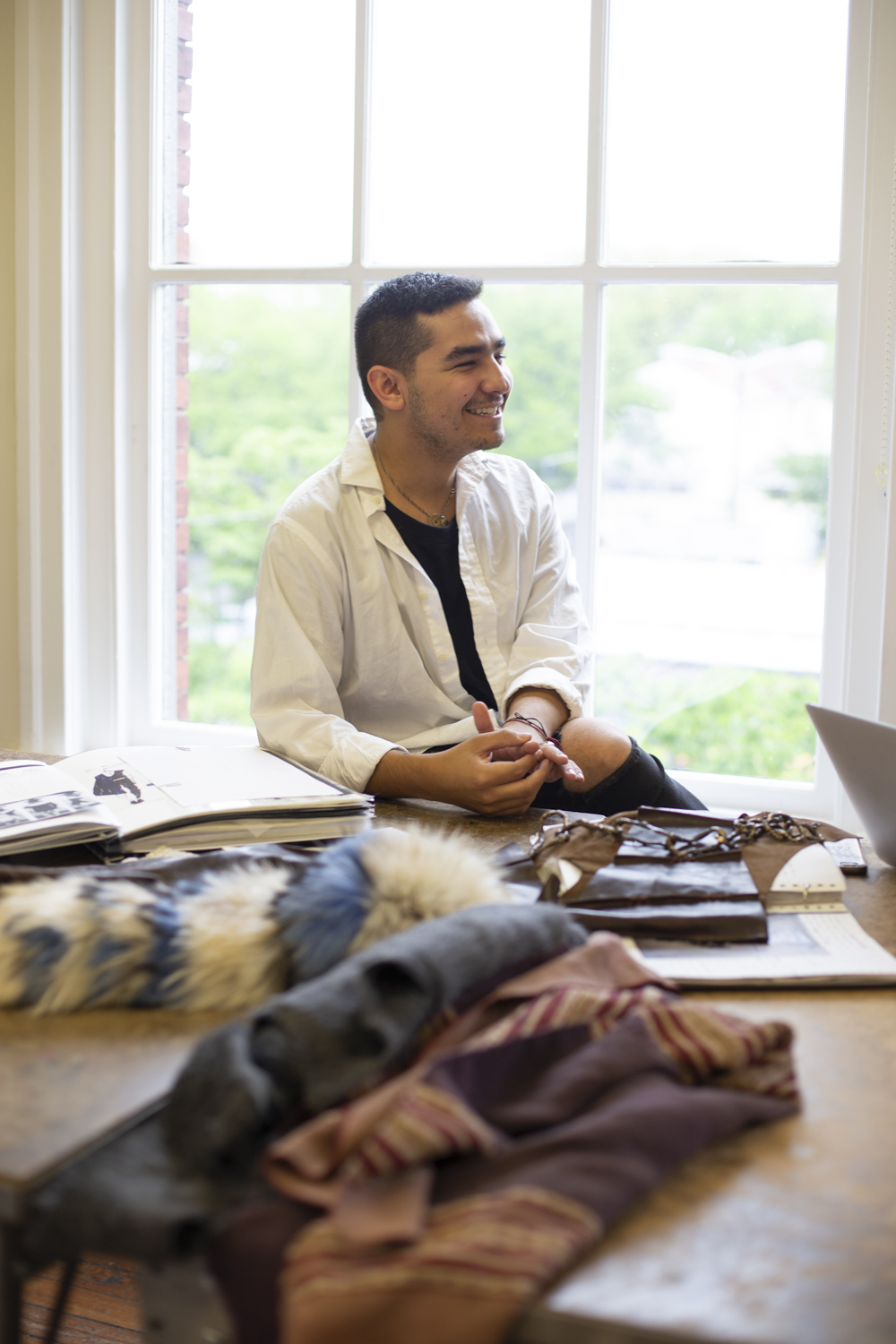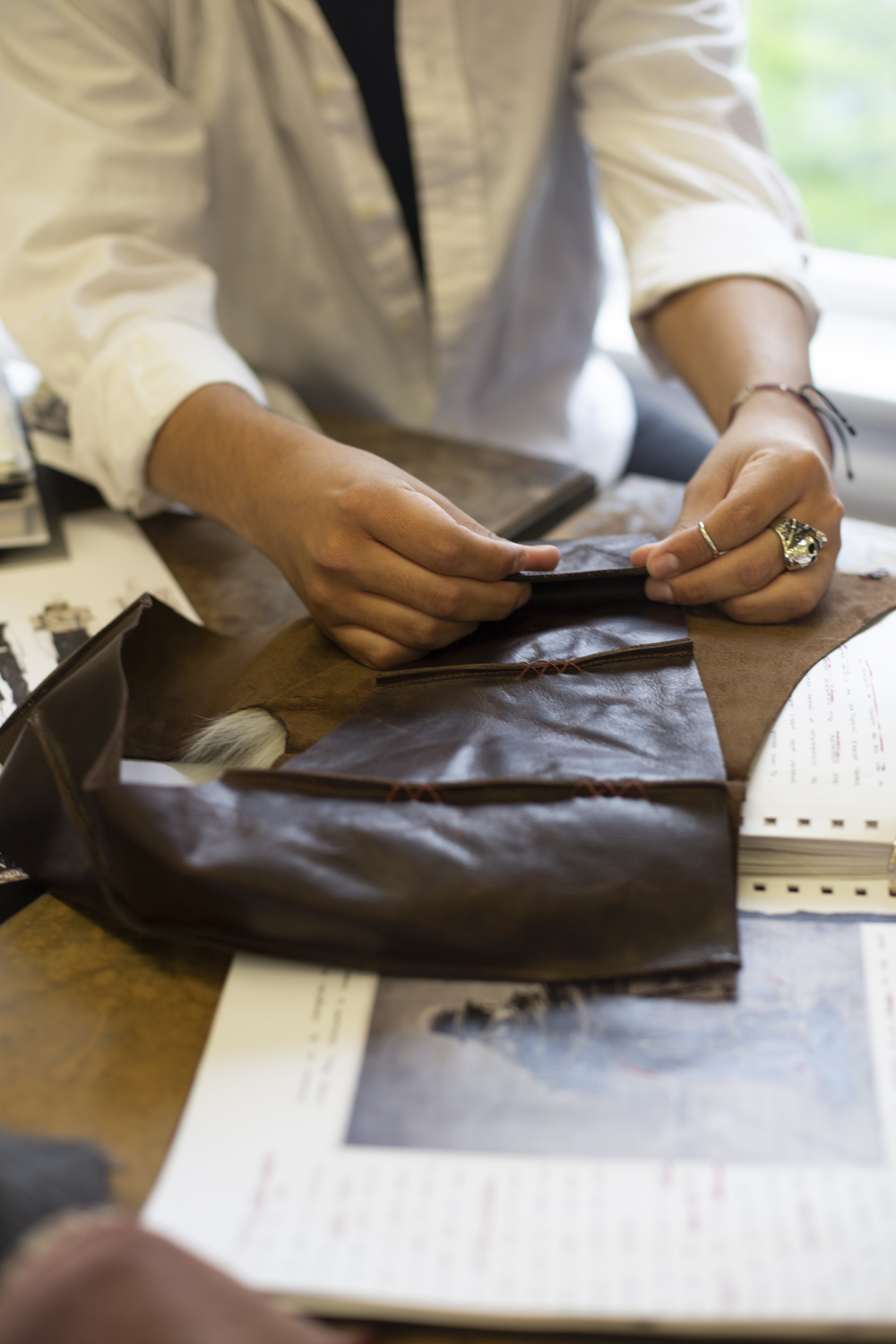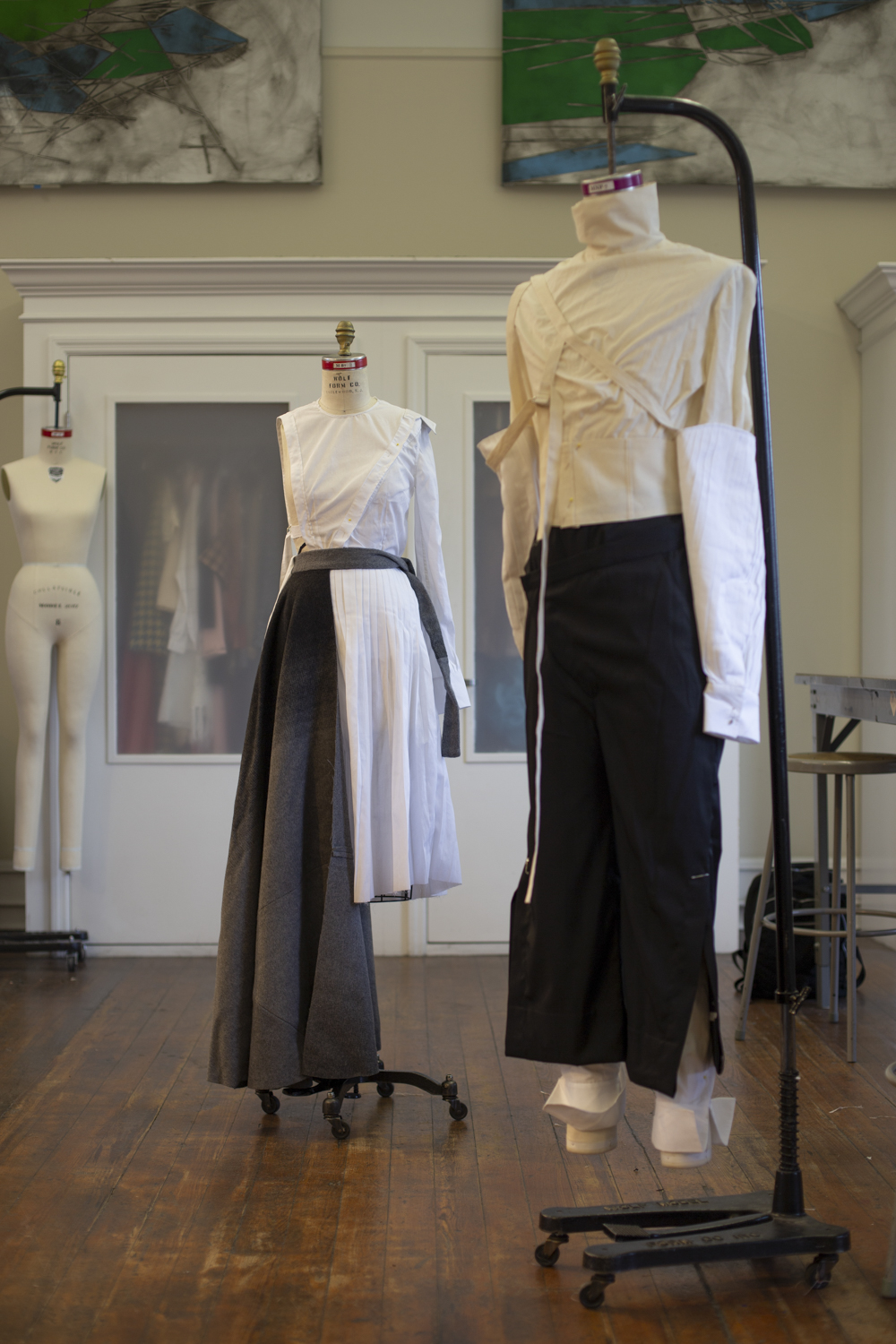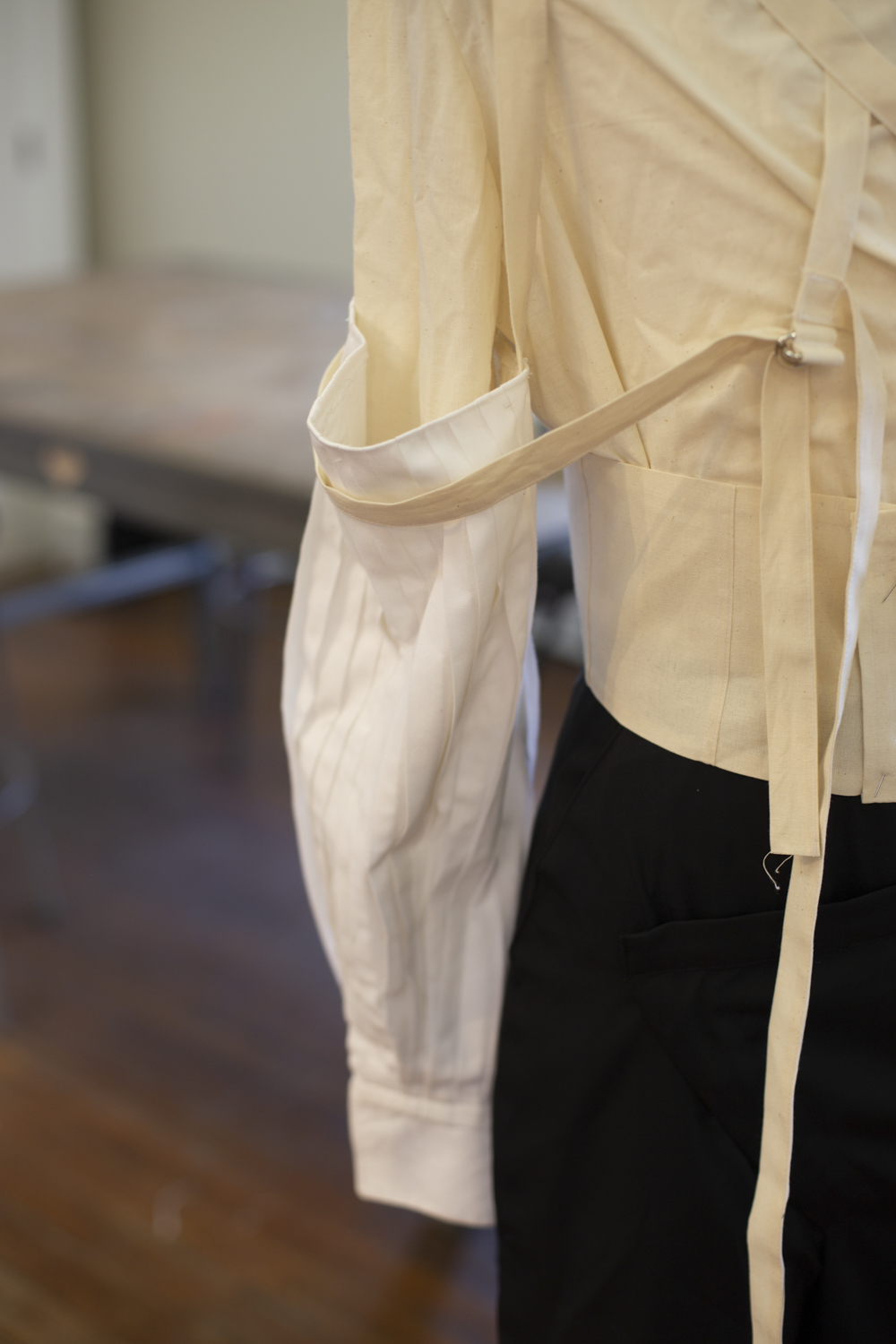Each Spring Quarter, The Manor highlights talented fashion design seniors creating their final collections. The creatives are working tirelessly in hopes of having their work presented on the runway for the highly anticipated SCAD FASHWKND.
José Criales is one of the School of Fashion’s golden boys. After traveling to Asia and learning the country’s history, interning in New York, and delving into his heritage in Bolivia, Criales is redefining menswear by mixing his knowledge and experience of leatherworking, personal experiences, and more within his senior collection. We got a chance to chat with Criales as our first senior collections profile for Spring 2018.
Manor: How did you become interested in fashion?
Criales: I have been interested in fashion ever since I was a kid. My mom use to make a lot of her clothing, so I grew up watching her sew and I learned how to sew because of her. My dad is actually very into pop culture, he loves that kind of stuff. He’s always watching red carpets and I used to watch it with him. I learned about fashion in that aspect, and then eventually started transitioning into learning fashion in different perspectives. I like to use fashion as a research tool and a mirror, something that reflects what we do as people and our culture.
“That is also the combination of what I am doing in my collection, trying to use fashion as something that’s more than just design and clothing, but gear towards research, quality, and culture. “
M: What inspired your collection?
C: My collection is inspired by the culture and the social effects of colonization. It tells a story about how colonization changes a culture and how, instead of merging two cultures together, it creates a third one. It’s a combination between three specific case studies. The first one is The Andes, Bolivia, which is where I’m from. I grew up learning about colonization in a specific way. So in my process book there are a lot of images of how the natives dress right now. You can see the influence of all the difference cultures that colonized Latin America. The second study is from one of my favorite books, Heart of Darkness by Joseph Conrad. This book tells a story of the colonization of the Congo and from there I started to add more textiles. Lastly, my travels to Asia and learning about Vietnam and how China was colonized is where I started to add hardware and other materials.
M: What was your experience with majoring in accessory design and fashion?
C: It was an amazing experience. Unfortunately, I had to drop the major. It required me to stay an extra year and between money and time, it was just too much. I am, however, using a lot of the knowledge of accessory design, like the leather work, pattern making, sewing, and techniques. It has been a great learning experience, not only collaborating last year with Lottie Bertello and Tiffany Nunes, but also using it and putting it on my own collection.
M: Will you be incorporating any of your accessory or footwear designs?
C: I am actually hand sewing three handbags and I am also making a pair of boots. The boots are one of the most exciting pieces for me in the collection. It is thigh high boots that zip up to the pair of shorts. Before this interview, I was actually downstairs working on the boots.
M: What was your favorite part of the design process?
C: I love concepting and I love researching. Again, I love using fashion as a way of understanding culture and understanding people, so I think that helped me a lot during Summer and Senior I. I had time to dive into everything I learned in and out of my fashion classes and apply it in different ways. There’s a little bit of history, anthropology, art history, different performance arts and textiles artists. There’s a bit of everything that goes into connecting and that’s what I love the most, being able to do whatever you want and see what comes out of it.
M: What has been your biggest struggle while working on your collection?
C: It’s two things. The main one is that I tend to get carried away with my concept, so eventually I tried to just do the storytelling aspect of it instead of focusing on the rest. The second one is designing within the time constraint. A lot of us, if not all of us, would like to do crazy stuff that is out of this world. But, you have three weeks for three looks. There’s only so much you can do. It’s compromising and being able to say I can’t really do everything I want to do.
M: What’s your evolution been since freshman year– within your style, aesthetics, and design?
C: It’s been, well, crazy actually. It’s a lot, especially aesthetically. When I first came to SCAD, I was very driven to womenswear, to a very feminine silhouette and evening wear. Then, in my sophomore and junior year, I started to get more into a more concept driven side of fashion. Then I got really into active wear. Then I started learning and discovering a lot about menswear and my junior and senior year are very evident about how much I learned and a lot of my inspiration comes from menswear and how I can transform it and use it as storytelling tool. So yeah, my collection has three male and three female looks, but they are all driven by menswear and designed in a male croqui and then just tailored to the women if I need to.
M: You have collaborated with other artists and SCAD alumni, what collaboration has been your favorite?
C: My favorite collection… maybe I shouldn’t say it [we both laughed] to be politically correct. Definitely Lottie. I mean last year I enjoyed working with Lottie and Tiffany both a lot, but with Lottie I discovered an aspect of myself, which is that I enjoy using different materials. I am using fur in my collection; the main reason I am using it is through Lottie and the work I did with her. I won a competition within SCAD and I got the opportunity to work with Saga Furs. They provide fur to Oscar de la Renta, Tom Brown, and all these huge houses. I was the winner last year and went to Copenhagen to learn from their designers, furies, and design center and they are actually sponsoring part of my collection. So I think [Lottie’s collaboration] has been my favorite, not only working with one of my best friends, but also the outcome and learning a lot more from something I was interested in and what came out of it. For Tiffany for example I was in my consort zone, I was doing hand stitch bags, you know is something I love, but with Lottie I was pushed out of that comfort zone to create something that even when I was in the design stage I had no idea what it was going to look like until I was done and it was this huge fur hat and I was like wow “ I had moments” and (he laughed again)
M: Everyone wants to hear this, what advice would you share with other students in the fashion program?
C: It is important to just do you. I feel that a lot of our professors, and of course they mean well, always try not only to push you outside of your comfort zone but also make sure you are looking into every possibility. That’s amazing and I am super thankful for my Senior I professor because he did that. He made me design this collection in every possible perspective, until I had 200 sketches and then picked eight and then six and then I had my collection; but I think you have to be true to yourself and eventually you leave SCAD and all you have is your work. Professors can know you; they can love you. You have a lot of friends and a good reputation but that stays here you know that stays as a student. Don’t be afraid to experiment a lot. I think in these four years I have done a little bit of everything. I have done handbags with Kate Spade, who is not my aesthetic, but I did it. I did menswear with Banana Republic. I did activewear within here. I did a little bit of women’s. It’s a learning experience. You are supposed to learn and just try a little bit of everything and eventually you will find what you want to do the most. I think that’s why I am so excited about my senior collection because it is a combination of everything that I have been learning here: function, menswear, womenswear, leather work, and it’s just me grabbing everything I love of all that and putting it in my collection. Find collaborators. Make sure you are working with people that are as excited as you are. I am working with three people right now. In fibers with Paola Maldonado– she’s from Ecuador. She loves natural fibers as well so she is as excited as I am. I am working with Valentina Angulo with the metalwork and jewelry and she is just as excited because she likes the aesthetic, the whole look, and the kind of stuff we are doing. And lastly with Vivian Sredni. She’s making some shoes for me and she’s also super excited. So, if you collaborate it has to be with people that are passionate about your work just as you are.
Written by Laura Ramirez
Photos by Liam Graham Haehnle

